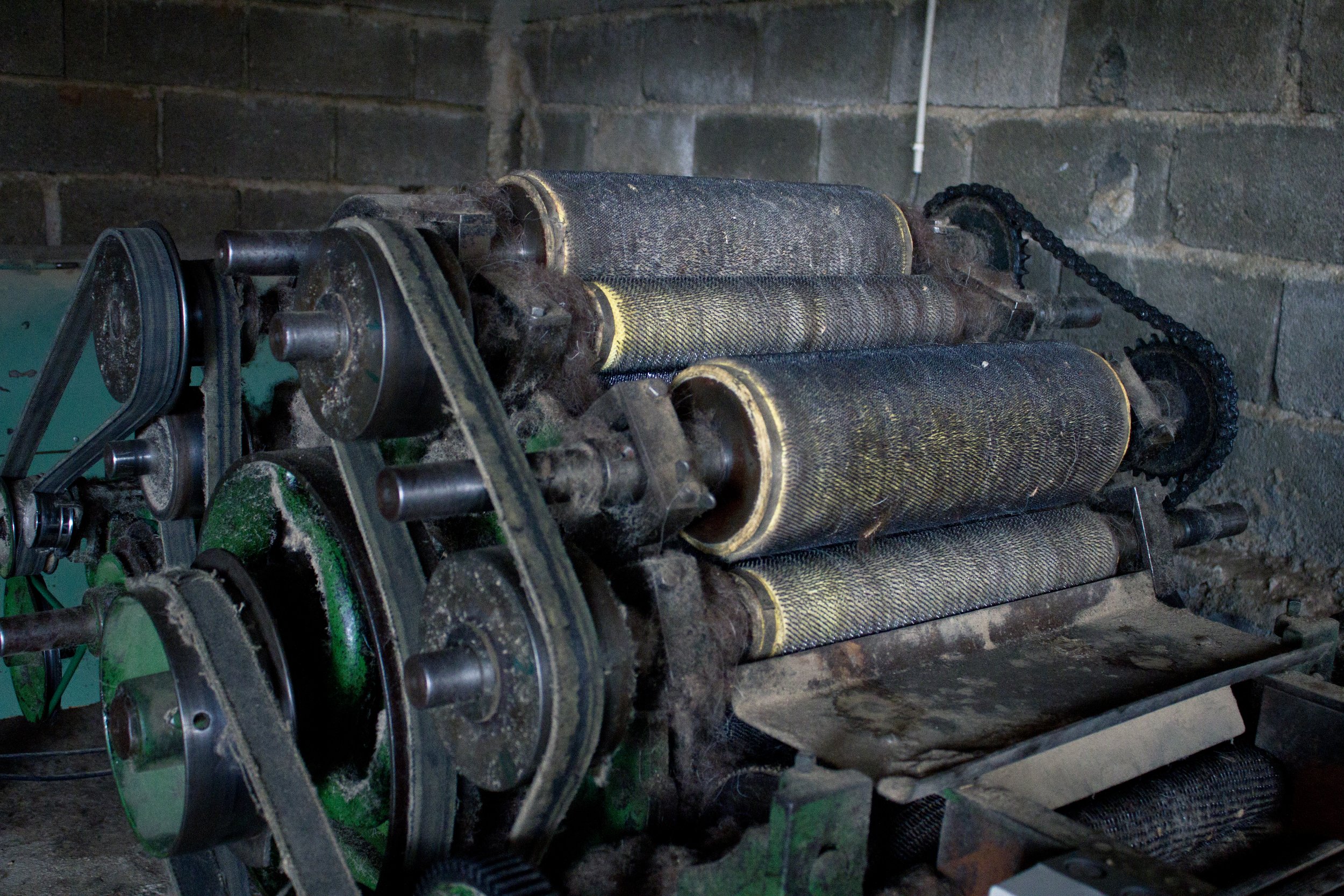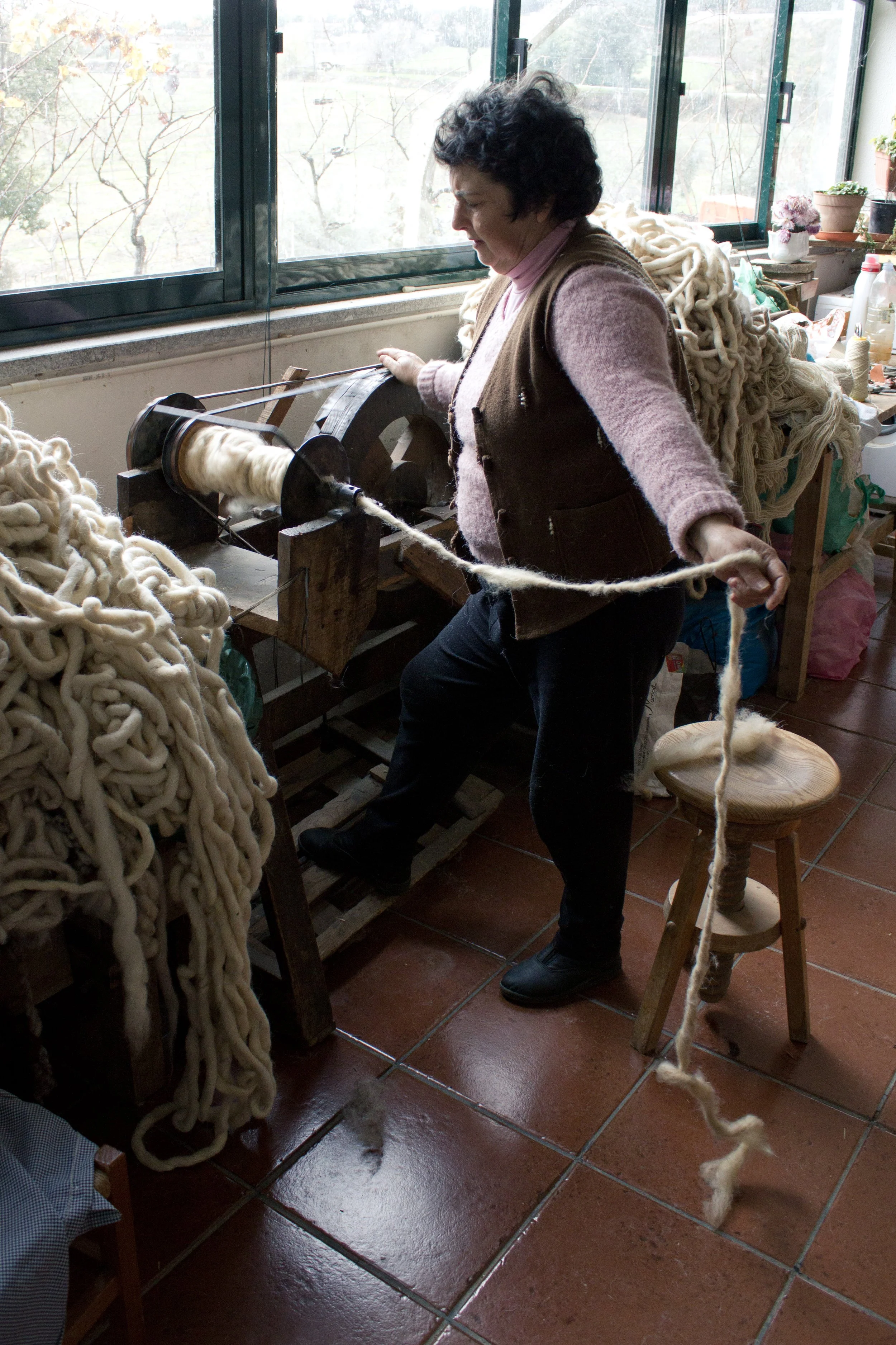Fátima Gomes, Weaver
Fátima Gomes's rugs have stayed in my memory since I first saw and touched them last August. There's a rustic side to them that respects the natural beauty of the wool and, at the same time, manages to be incredibly sophisticated in its simplicity. In December we took advantage of our return from Trás-os-Montes and stopped in Mirandela to pay them a visit.
The wool of the Churra Badana Sheep is only treated by her after shearing. The use of Churra wool, despite being local, is not accidental in my opinion. The thickness and density of the fibers gives it more structure, which makes it more suitable for larger works. In her atelier there are all kinds of tools for working with wool, from exclusively manual ones, such as carders and spindles, to spinning wheels and semi-industrial carding and spinning machines from the early 20th century - these are real rarities that are still in operation.
When the machines stop working due to a breakdown, as had happened with the carding machine on the day we visited her, Mrs. Fátima always relies exclusively on manual labor. To spin the very thick wool she uses to weave her carpets, she uses a giant spindle that she carved from a broom handle, and the wool bundle is as big as the carding machine allows.
From here on in, everything increases in proportion and, in order to be able to spin in this way, the technique is quite different from those I've seen so far. The spindle is turned with the help of the leg, where it is rubbed to twist the wool. In the left hand, the wool is pulled without the aid of the spindle, using the whole hand.
The giant proportion continues from the spindle to the loom. Skeins and skeins of thick wool, which are washed before being woven, hang from the looms, the wheels, the doors, everywhere.
Her loom doesn't have the little shuttles that I'm used to seeing on looms everywhere. The wool is simply wound onto a stick, which will be used to pass it between the warp. The warp, also made of wool, is spun especially for her by another lady.
In the plain rugs, the weaving is simply beaten, and sometimes the surface is carded with appropriate brushes - a technique also used in blankets to make them thicker and warmer. In what are, for me, the most beautiful and labor-intensive rugs, D.Fátima pulls out small knots of wool using only her fingers, one by one, along each line. The result is a surface with little balls of wool, in white, brown and gray.
D. Fátima learned to weave and work with wool from her mother, but since then she has been putting her own stamp on the work she does, and her creative sensibility overflows through every fiber. It's her passion that spreads the wool to every corner, multiplies the tools, grows rugs and even gets her husband to design looms to suit her work.































